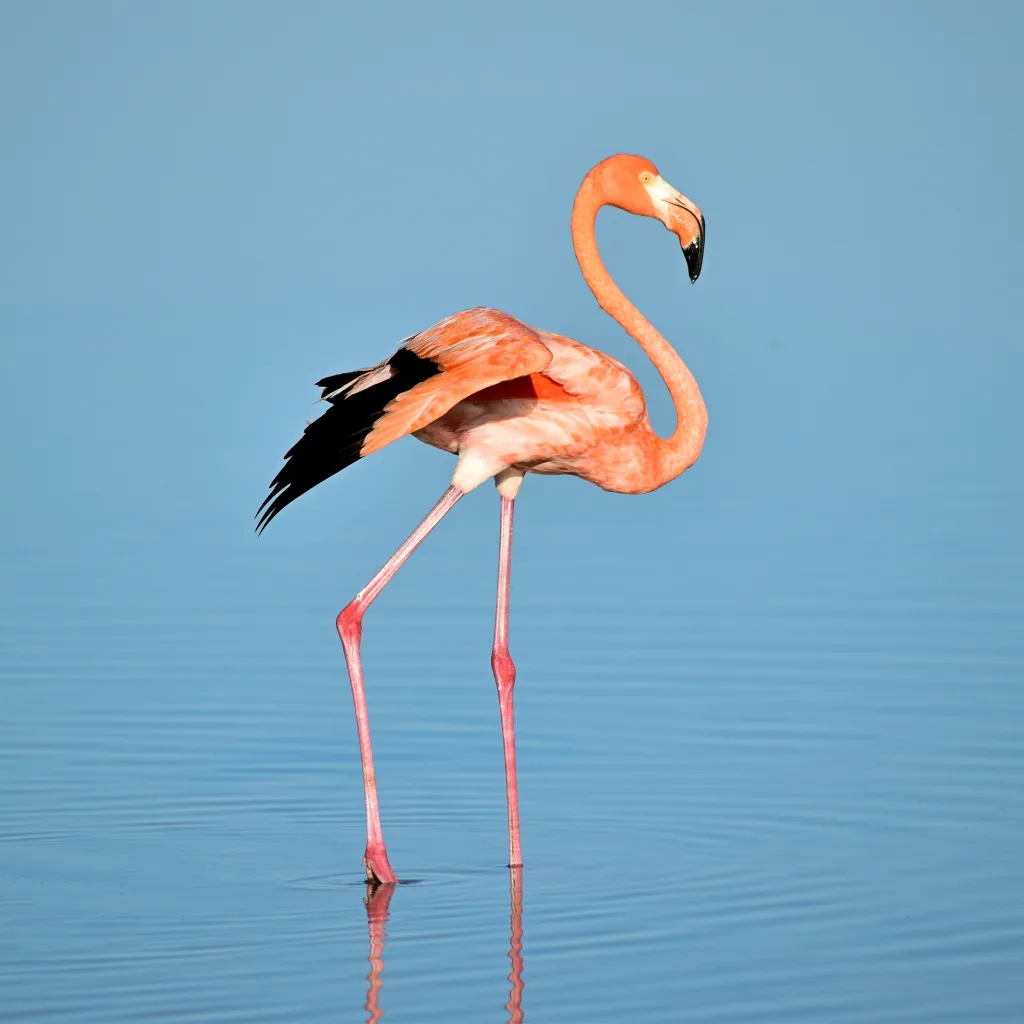Flamingos are fascinating creatures known for their vibrant pink feathers and graceful presence. But have you ever wondered where these elegant birds call home? Let’s delve into the habitats of these wading birds and discover where they live.
Flamingos can be found in various parts of the world, including Africa, Asia, the Americas, and Europe. In the United States, specifically in Florida, American flamingos have been observed along much of the state’s coast. However, the majority of sightings, more than 95% to be precise, have occurred within the Everglades, Biscayne Bay, and the Florida Keys.
The Everglades, a vast wetland ecosystem in southern Florida, provides a perfect habitat for flamingos. These birds thrive in the shallow areas of water linked to the sea, such as lakes and lagoons. Their long legs and necks are well-suited for wading along the edges of these bodies of water, where they can search for food.
Flamingos are highly social creatures and often form large colonies. These colonies can consist of hundreds or even thousands of individuals. They prefer to nest on islands or in shallow water, where they can find protection from predators and disturbances.
Apart from Florida, flamingos can also be found in other parts of the Americas. In the Caribbean, for example, several islands are home to these beautiful birds. Cuba, the Bahamas, and Mexico are just a few of the places where you might catch a glimpse of flamingos in their natural habitat.
Moving away from the Americas, flamingos can also be found in other regions. In Africa, they can be spotted in countries like Kenya, Tanzania, and Namibia, where they inhabit various wetland areas. In Europe, Spain and France are known to host flamingos, particularly in coastal regions and salt pans.
It’s important to note that flamingos are migratory birds. They often travel long distances in search of suitable habitats and better feeding grounds. During these migrations, they may fly hundreds or even thousands of miles, making impressive journeys across continents.
Flamingos can be found in various parts of the world, but in the United States, Florida is a prime location for observing these magnificent birds. The Everglades, Biscayne Bay, and the Florida Keys provide the perfect habitats for flamingos to thrive. Whether wading along the edges of lakes or nesting on islands, these elegant creatures continue to captivate and amaze us with their presence.

Where In Florida Does Flamingo Live?
Flamingos in Florida primarily reside in three main areas: the Everglades, Biscayne Bay, and the Florida Keys. These locations account for over 95% of all observed flamingo sightings in the state. However, it is worth mentioning that American flamingos have also been spotted along much of Florida’s coastline, with the exception of Hialeah. Here is a breakdown of the specific regions where flamingos can be found in Florida:
1. Everglades: The Everglades National Park is a significant habitat for American flamingos. This vast wetland ecosystem provides suitable conditions for these birds, including shallow water, mudflats, and seagrass beds, which are ideal for feeding. The Everglades is located in southern Florida and covers a considerable portion of the state.
2. Biscayne Bay: Flamingos have also been observed in Biscayne Bay, which is a large lagoon situated on the southeastern coast of Florida. Biscayne Bay offers a diverse range of habitats, including mangrove forests, seagrass beds, and shallow waters, which attract flamingos and provide them with ample food sources.
3. Florida Keys: The Florida Keys, a chain of islands off the southern tip of Florida, serve as another habitat for flamingos. These islands offer a mix of coastal areas, saltwater flats, and mangrove swamps, which create an attractive environment for these birds. The Keys provide a relatively secluded and protected location for the flamingos to thrive.
It is important to note that while flamingos are predominantly found in these three regions, they have been occasionally spotted along other parts of Florida’s coast. However, these sightings are less frequent compared to the Everglades, Biscayne Bay, and the Florida Keys, where the majority of the flamingo population resides.
Do Flamingos Live In Water?
Flamingos are known to live in and around water. They are wading birds commonly found along the edges of lakes and lagoons, which are shallow areas of water connected to the sea. These areas offer the ideal habitat for flamingos due to the abundance of food sources such as algae, small aquatic invertebrates, and crustaceans. Flamingos have long legs and necks, allowing them to comfortably wade through the water while foraging for food. They are well adapted to their aquatic environment, with webbed feet that help them navigate through the water and balance on one leg while resting. Flamingos often form large flocks, gathering in the water to feed, breed, and engage in social interactions. Their vibrant pink color comes from the pigments found in the organisms they eat, specifically the algae and shrimp-like crustaceans. while flamingos do not live exclusively in water, they are highly dependent on these aquatic environments for their survival and are most commonly observed in and around water bodies.
Conclusion
The majestic flamingos can be found in various regions, with a significant presence observed in the state of Florida, particularly along the coastlines. While American flamingos are known to inhabit different coastal areas of Florida, the majority of sightings occur within the Everglades, Biscayne Bay, and the Florida Keys. These areas provide the perfect habitat for flamingos, with their shallow waters and abundant food sources. Additionally, it is worth noting that flamingos are wading birds, characterized by their long necks and legs, which enable them to navigate and thrive in the watery environments they inhabit. So, whether you’re exploring the picturesque landscapes of the Everglades or enjoying the coastal beauty of Biscayne Bay, keep an eye out for these graceful creatures as they gracefully forage along the edges of lakes and lagoons.
